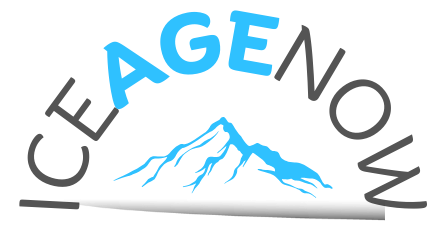Feeling perplexed by the lack of snow this season? You’re not alone. Snowpack data across the U.S. paints a concerning picture, with most monitoring stations showing below-average levels. Climate change is only making matters worse, impacting water resources crucial for millions. Despite recent storms offering some relief, snow drought conditions persist, posing serious challenges to water supply systems. Stay tuned as we delve deeper into the pressing question: “Why Is There No Snow?”
Snowpack Monitoring and Climate Trends
It’s crucial to monitor snowpack levels as they directly impact water availability and track climate trends. Snowpack data reveals more than 90% of U.S. monitoring stations below median levels, affecting water supply for farmers and hydropower. Climate change projections indicate further decreases in snowpack, impacting over 2 billion people’s water sources. Snow monitoring across 800+ Western U.S. stations shows lagging snow accumulation, correlating with recent Nature research linking declining snowpack to climate change. Understanding these climate trends is vital as declining snowpack not only affects water availability but also influences wildfire risk and hydropower output. Stay informed about snowpack data to grasp the broader implications of climate change on water resources.
Implications of Decreasing Snowpack
Explore how declining snowpack levels directly impact water availability for farmers and hydropower generation, especially in regions where over 90% of monitoring stations are below median snow levels.
- Water Scarcity
- Decreased snowpack diminishes water supply crucial for agriculture.
- Snowmelt decline affects reservoir levels critical for irrigation.
- Environmental Impact
- Altered snow patterns disrupt ecosystems dependent on consistent water sources.
- Water scarcity intensifies habitat loss and threatens biodiversity.
In regions relying heavily on snowmelt runoff, such as the Western U.S., the diminishing snowpack not only poses agricultural implications but also challenges hydroelectric power generation. To adapt to these changing conditions, strategies emphasizing climate adaptation in water management systems become increasingly vital.
Recent Winter Weather Patterns
Recent storms have increased snow coverage in the U.S., highlighting the fluctuating winter weather patterns. Temperature fluctuations have been evident, with some regions experiencing warmer temperatures while others faced significant snowfall. Storm frequency has played a crucial role, impacting snow accumulation and weather impacts across different areas. Snow coverage has varied, affecting water availability and regional landscapes differently. The recent winter has shown how weather impacts can vary greatly based on regional variations, influencing everything from agriculture to outdoor activities. Keeping an eye on these changing patterns is essential for understanding how climate change and natural variability are shaping our winter experiences.
Current Snow Drought Conditions
The current snow drought conditions persist despite some recent improvements from storms.
- Snow Scarcity
- Snow levels remain below average across many monitoring stations.
- Unusual delays in snowpack accumulation are causing concerns for water supply.
- Climate Impact
- Climate change projections indicate further decreases in snowpack levels.
- Declining snowpack directly impacts water availability for various sectors, exacerbating water scarcity issues.
Despite recent storms, the overall picture of snow scarcity and its implications on water scarcity and environmental concerns persists. The ongoing drought conditions highlight the challenges posed by diminishing snowpack levels and emphasize the pressing need for sustainable solutions to address these critical environmental issues.
Challenges in Snowpack Assessment
You should be aware of the difficulties faced in accurately assessing snowpack levels due to various factors impacting data collection and analysis. Snowpack analysis is crucial for understanding water availability and environmental impacts. Data collection methods vary, from manual measurements to remote sensing techniques, influencing the accuracy of assessments. Measurement techniques like snow surveys and ground-penetrating radar help gather essential data on snowpack variations. However, challenges such as inconsistent data quality, limited access to remote areas, and changing climate patterns make assessment challenging. These obstacles highlight the need for improved technology and standardized protocols in snowpack monitoring.
| Factors influencing assessment | Impact on data collection |
|---|---|
| Changing climate patterns | Decreased accuracy |
| Inconsistent data quality | Limited reliability |
| Remote area accessibility | Reduced coverage |
| Evolving measurement methods | Enhanced precision |
Effects of Snowfall Decline on Water Supply
Decreasing snowfall amounts may lead to significant challenges in maintaining water supply for various regions. This decline could result in water scarcity issues, impacting agricultural practices and urban water availability. The hydrological impact of reduced snowfall includes alterations in snowmelt dynamics, affecting the timing and volume of water runoff essential for ecosystems and human consumption.
- Water Scarcity
- Impacts agriculture and urban areas.
- Hydrological Impact
- Alters snowmelt dynamics crucial for ecosystem health.
Adapting to these changes requires implementing climate adaptation strategies that consider the potential increase in extreme precipitation events as a compensatory factor in areas experiencing reduced snowfall levels.
Snowfall Extremes in a Warming Climate
Experiencing more extreme snowfall events due to global warming can lead to challenges in water management and distribution. With Arctic warming intensifying, the atmosphere’s moisture reservoir increases, heightening the likelihood of extreme precipitation. This variability in snowfall patterns directly impacts water availability, particularly in regions relying on snowpack for supply. As global temperatures rise, these fluctuations may become more pronounced, affecting water resources worldwide. Monitoring these changes is crucial as shifts in snowfall extremes can have far-reaching consequences on water supplies. Innovation and adaptation in water management practices will be essential to address the evolving dynamics of snowfall and ensure sustainable access to this vital resource amidst a changing climate landscape.
Global Water Supply Challenges
Less snowfall does not directly translate to less water availability and depends on various snow factors, showing the complexity of managing global water supply challenges amidst a changing climate. When considering water scarcity and the intricate relationship between snow and water resources, understanding snowmelt dynamics becomes crucial:
- Hydrological Impacts:
- Snowpack decline affects water supply for regions with boom-and-bust precipitation cycles.
- Innovative solutions are required to mitigate potential disruptions in water availability.
In managing global water supply challenges, it is essential to recognize the significance of the snow-water relationship and explore innovative solutions to ensure sustainable access to this vital resource.
Snow’s Role in Water Management
You should focus on understanding the crucial relationship between snow and water resources to effectively manage water availability in regions heavily reliant on snowmelt runoff. By grasping snowpack dynamics, hydrological impact, and snowmelt runoff patterns, you can adapt water resource management strategies to changing climate conditions. Consider the table below highlighting key aspects of this relationship:
| Snowpack Dynamics | Hydrological Impact |
|---|---|
| Snow accumulation trends | Water supply fluctuations |
| Snowmelt timing and intensity | Impacts on agriculture and energy sectors |
| Climate change effects on snowpack size | Changes in river flow patterns |
Understanding these elements is crucial for effective climate adaptation and sustainable water resource management in snow-dependent regions.
Research and Solutions for Water Sustainability
Now, let’s delve into Research and Solutions for Water Sustainability to address the challenges of declining snowpack. To achieve water sustainability, consider implementing the following:
- Local Initiatives
- Engage communities in water conservation efforts.
- Establish local programs for sustainable water use.
- Innovative Technologies
- Integrate advanced monitoring systems for accurate data collection.
- Develop technologies for efficient water distribution.
Exploring these avenues can enhance your understanding of water management at a local level, promote sustainable practices, and pave the way for policy implications that ensure a resilient future. By embracing innovation and community engagement, you contribute significantly to safeguarding our precious water resources.


